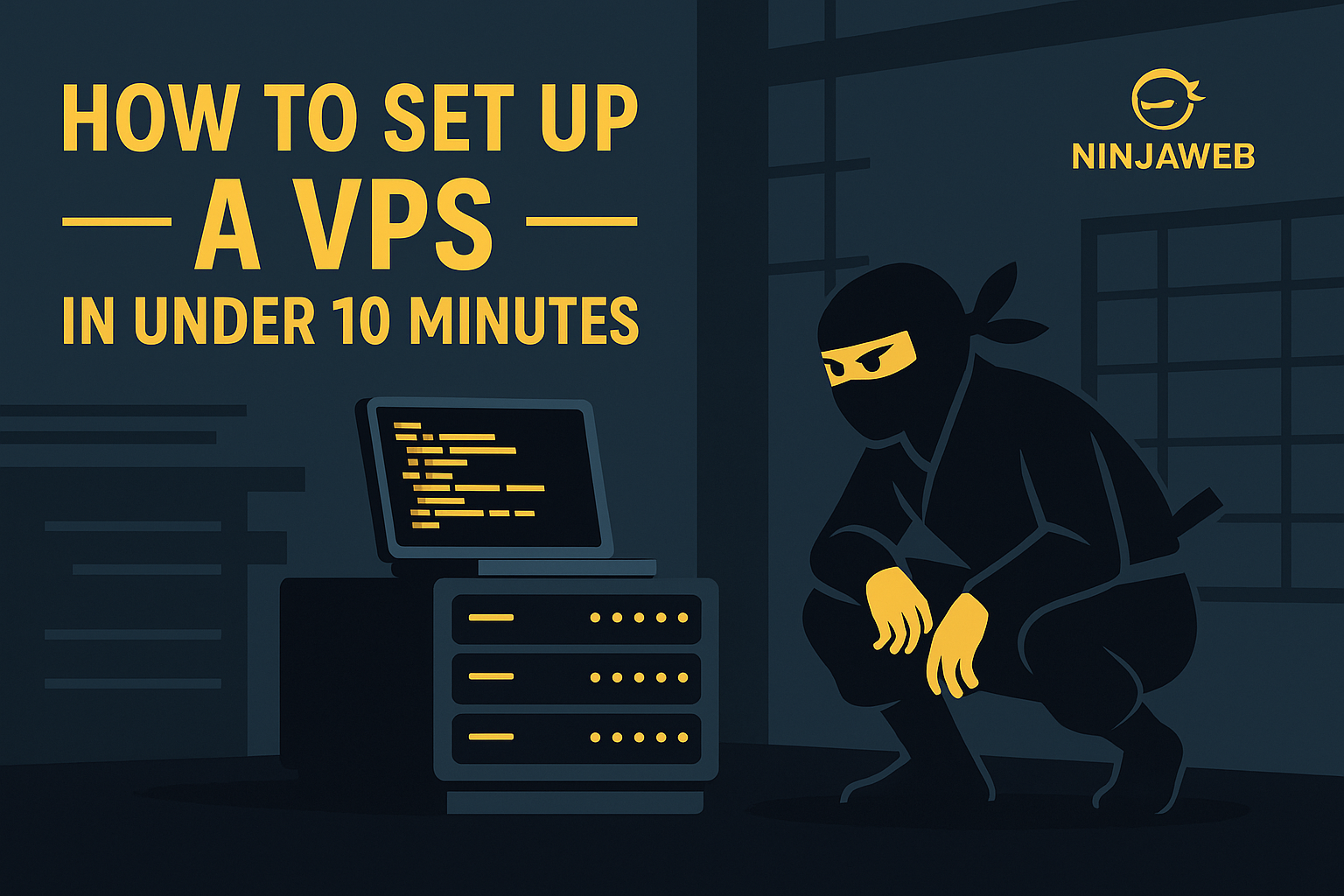
When a true ninja moves, they do it fast, silent, and with precision. Setting up a VPS (Virtual Private Server) is no different. With the right technique, you can spin up your VPS in under 10 minutes and have it ready for WordPress, apps, or your digital empire.
⚡ Step 1: Choose Your VPS Like a Ninja Chooses a Blade
Before the action begins, you need the right weapon. A VPS gives you more power and control than shared hosting, without the hefty price tag of a dedicated server.
👉 Start by selecting your VPS Hosting plan. NinjaWeb VPS plans deliver dedicated resources, SSD storage, root access, and low latency in Australian data centres.
- Small WordPress site – 1 to 2 GB RAM
- Business site or WooCommerce – 4 GB+
- Heavier apps or multiple sites – 8 GB+
🛠 Step 2: Access the VPS via SSH
Once provisioned, you will receive the server IP, root user, and a temporary password.
ssh root@your-vps-ip🧹 Step 3: Update & Patch AlmaLinux
Clean caches and apply the latest security updates.
dnf clean all
dnf update -y🛡 Step 4: Basic Security Essentials
Security is part of setup – not an afterthought.
4.1 Create a non-root sudo user
adduser ninjauser
passwd ninjauser
usermod -aG wheel ninjauser4.2 Secure SSH
nano /etc/ssh/sshd_config
# Set:
# PermitRootLogin no
# PasswordAuthentication yes (or no if using keys only)
systemctl restart sshd4.3 Configure firewall (firewalld)
systemctl enable firewalld --now
firewall-cmd --permanent --add-service=ssh
firewall-cmd --reload4.4 Install Fail2Ban
dnf install epel-release -y
dnf install fail2ban -y
systemctl enable fail2ban --now
# Optional hardening:
nano /etc/fail2ban/jail.local
[sshd]
enabled = true
bantime = 1h
findtime = 10m
maxretry = 5
systemctl restart fail2ban
fail2ban-client status sshd🌐 Step 5: Point Your Domain & Install Web Stack
Point your domain A record to your VPS IP. Then install your preferred stack.
Option A – NGINX + PHP-FPM
dnf install nginx php php-fpm php-mysqlnd -y
systemctl enable nginx --now
# PHP-FPM recommended settings:
sed -i 's/^;cgi.fix_pathinfo=1/cgi.fix_pathinfo=0/' /etc/php.ini
systemctl enable php-fpm --now
# Allow web ports:
firewall-cmd --permanent --add-service=http
firewall-cmd --permanent --add-service=https
firewall-cmd --reloadOption B – Apache (httpd) + PHP
dnf install httpd php php-mysqlnd -y
systemctl enable httpd --now
# Allow web ports:
firewall-cmd --permanent --add-service=http
firewall-cmd --permanent --add-service=https
firewall-cmd --reloadDatabase – MariaDB
dnf install mariadb-server -y
systemctl enable mariadb --now
mysql_secure_installationSELinux web access (if needed)
# Allow web server outbound connections for updates or remote APIs
setsebool -P httpd_can_network_connect onPrefer a managed build with caching, backups, and monitoring handled for you? Use Managed WordPress Hosting and let our team handle the heavy lifting.
🥋 Step 6: Launch Your First Site
Once DNS propagates, deploy your app or WordPress, then test in the browser. Your VPS is live.
🧠 Pro Tip: Backups & Monitoring
Even the strongest ninja keeps watch. Enable automated backups, security scans, and uptime checks with Advanced IT Support.
🥷 Final Thoughts
VPS hosting gives you freedom, performance, and control. With a few decisive steps, you can go from zero to operational in minutes. Whether hosting WordPress, deploying apps, or building the next big thing – NinjaWeb VPS Hosting is your dojo.



